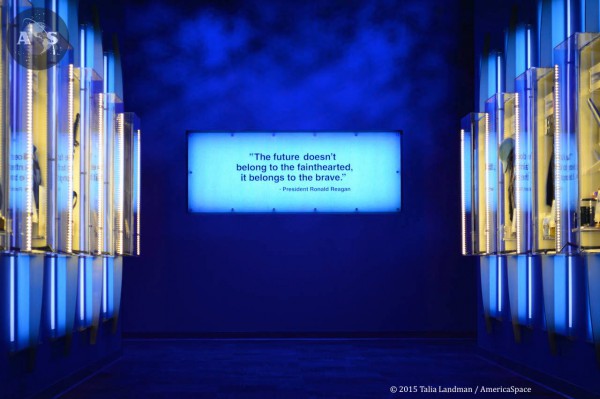
“The future doesn’t belong to the fainthearted, it belongs to the brave.” – President Ronald Reagan
There was not a dry eye in the house Saturday morning when Kennedy Space Center (KSC) Director Bob Cabana and NASA Administrator Charlie Bolden formally opened a new exhibit at the Kennedy Space Center Visitor Complex (KSCVC). The exhibit titled “Forever Remembered” honors the lives of the crews on space shuttle missions STS-51L and STS-107 and the orbiters Challenger and Columbia that were both lost during America’s 30-year space shuttle program. NASA and the families of the fallen astronauts worked together to create the exhibit, which accurately displays their lives and personalities.
The memorial contains personal items from both of the crews, as well as jaw-dropping recovered remnants of both orbiters never been seen by the public.
Upon first entering the memorial, one must walk through the Space Shuttle Atlantis exhibit. The exhibit displays the orbiter at a 43.21-degree angle (with payload bay doors open just the way she would look in space) and tells the story of the 30-year program. The exhibit cost about $100 million and encompasses two floors. Below the space shuttle wing was another exhibit in the making, but no one knew about it until now.
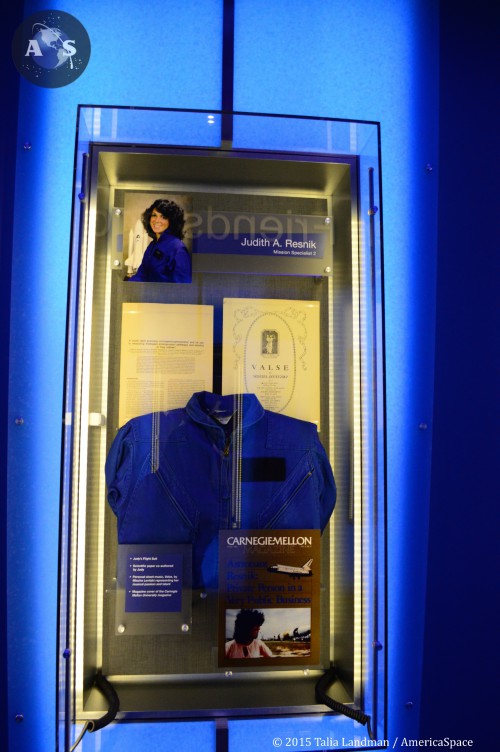
Families of the fallen heroes were in the audience Saturday morning as Bob Cabana spoke to them and recalled his memories with the flight crew of STS-107. Then Charlie Bolden took to the podium. He named off each one of the 14 crew members and reminded everyone that even though they are no longer among us, they certainly are in spirit.
“Every single one of them is with us,” Bolden began. “Every single one of them is watching us as we come here to celebrate. And every single one of them is incredibly happy as they look down on what they were apart of. What they made possible.”
It was Jan. 28, 1986, when Challenger lifted off into the skies above Kennedy Space Center and Cape Canaveral, then suddenly burst into a plume of smoke and debris just one minute and 13 seconds into the flight. Onboard were astronauts Ellison Onizuka, Christa McAuliffe, Greg Jarvis, Judy Resnik, Mike Smith, Dick Scobee, and Ron McNair. Temperatures were only a few degrees above freezing that day, making it very difficult for Challenger to leave the pad. Nevertheless, the crew would take flight on that frigid Tuesday morning, only for it to end catastrophically. As reported in an earlier AmericaSpace article on the 28th anniversary of the Challenger disaster, the cause of the tragedy was due to failure of the primary and secondary O-ring seals at the base of the right booster, due to cold temperatures.
A piece of the Challenger left side body panel is displayed behind a glass panel in a gallery to the right of the first hall. The piece of fuselage, with an American flag perfectly painted on, shows scrapes and charring along the outside with pieces missing. A very sad, yet humbling piece of history to look at, which stands as a reminder of the difficulties NASA faced in the early stages of the shuttle program.
Nearly 17 years later, on Jan. 16, 2003, Space Shuttle Columbia STS-107 took flight on a doomed 16-day science mission. Rick Husband, Willie McCool, Michael Anderson, Kalpana Chawla, David Brown, Laurel Clark, and Ilan Ramon were expected to return to NASA’s Kennedy Space Center on Feb. 1, 2003, but the orbiter broke apart as it re-entered Earth’s atmosphere over Texas. Debris from the orbiter scattered like tear drops across the sky, raining down on thousands of square miles below.
At the time of the disaster, Bob Cabana was the director of flight crew operations at NASA’s Johnson Space Center in Texas. It was his responsibility to inform the families of the fallen astronauts that their son, daughter, mother, father, etc., were not returning home. Surely one of the most difficult jobs in his career at NASA.
Inside the gallery, to the right of Challenger’s left body panel, are the cockpit windows of the Space Shuttle Columbia.
“When I look into those windows, I see John Young and Bob Crippen preparing to launch the boldest test flight in history, the first flight of America’s space shuttle, Columbia,” said Cabana, who is also a four-time space shuttle astronaut and pilot.
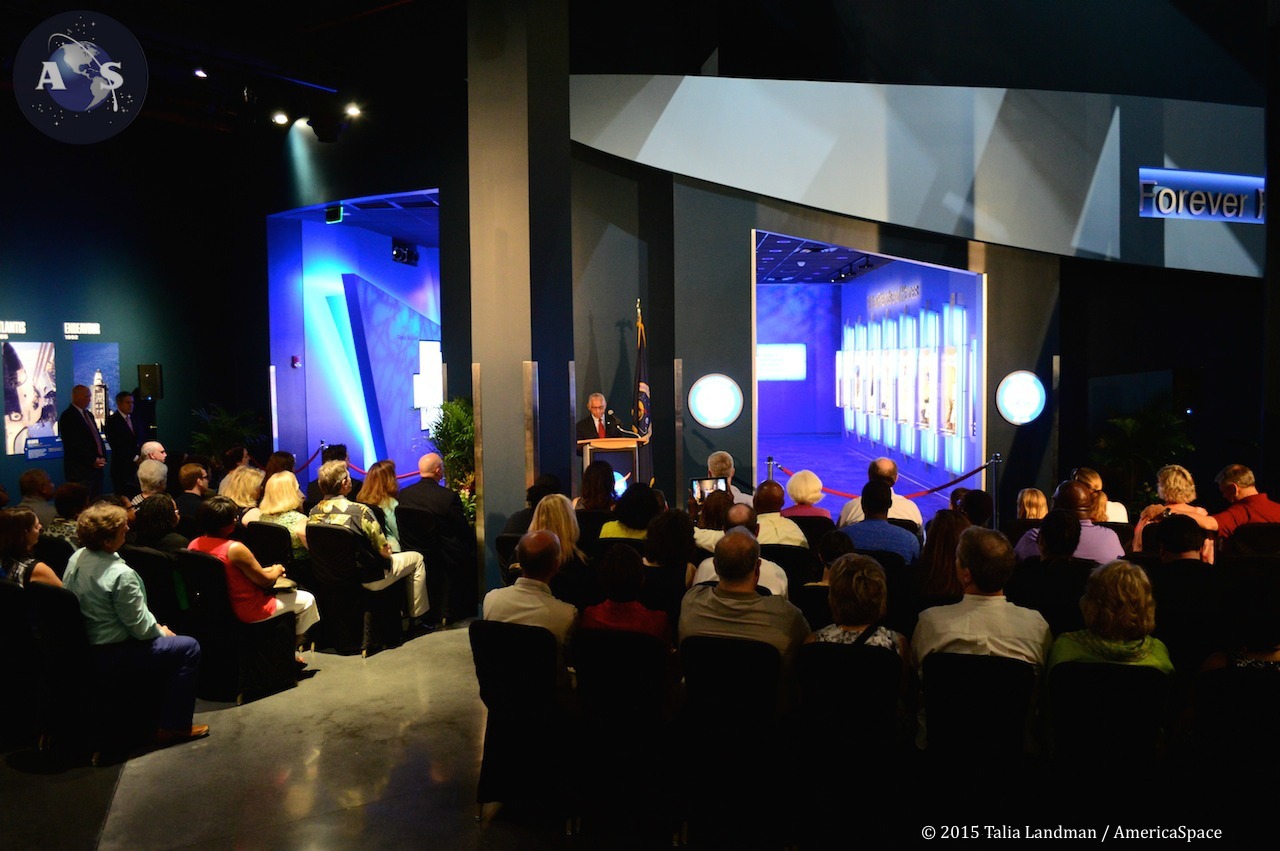
“I see a much younger Bob Cabana launching to space on his first command, and I see Rick and Willie and the rest of the 107 crew smiling and experiencing the wonders of space on the final flight of Columbia.”
The two pieces of the orbiters and the collection of memorabilia from the fallen astronauts are on display permanently under Atlantis to conclude the story of America’s 30-year space shuttle program. The artifacts were preserved and carefully moved to the exhibit during overnight moves to avoid the public finding out. The exhibit, an idea of Cabana’s, has been in the making for over four years (before construction began on the Space Shuttle Atlantis exhibit), and now it is finally open to the public.
“Forever Remembered” is an emotional display of America’s hardships and challenges encountered during the shuttle era, and the exhibit accurately displays the personalities of the 14 heroic astronauts who gave their lives in the name of country, space science, discovery, and exploration.
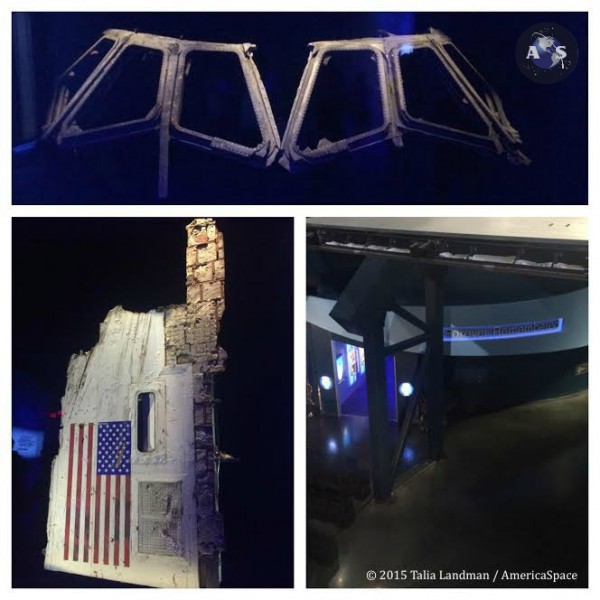
Be sure to “Like” AmericaSpace on Facebook and follow us on Twitter: @AmericaSpace




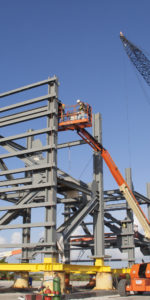
A fitting tribute to Challenger and Columbia.